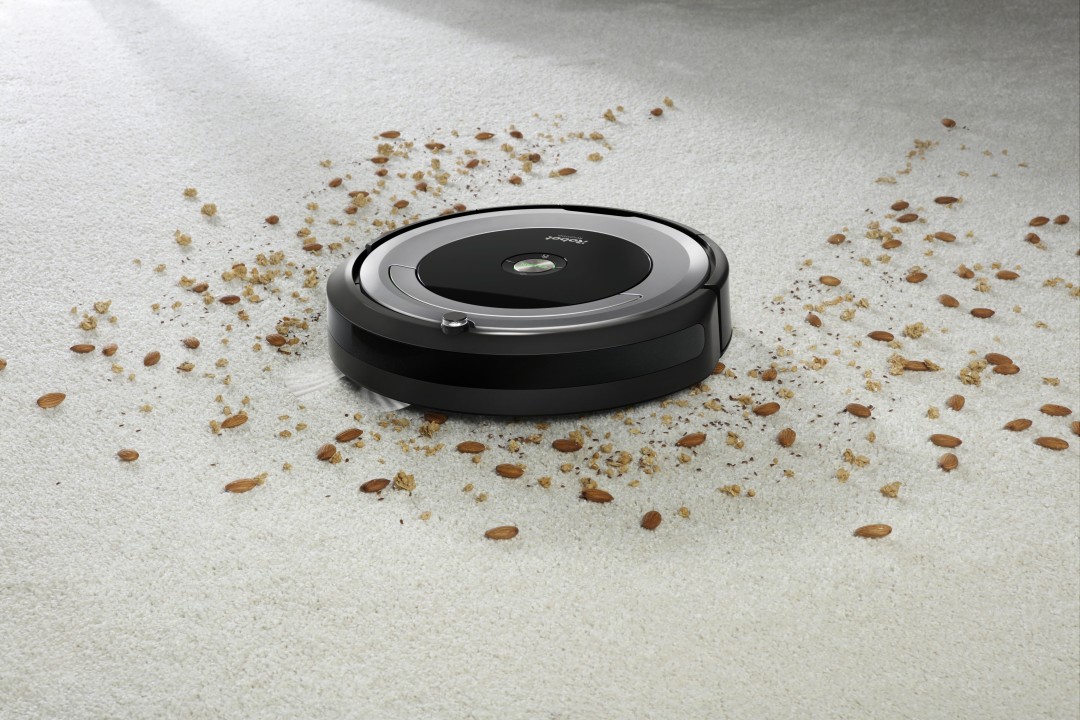
Roomba and the role of future robots
Today, the house-cleaning Roomba seems almost ubiquitous, but in a recent essay, its inventor, Joe Jones, recalls his wrong prediction in the 1980s that “in three to five years, robots will be everywhere doing all sorts of jobs.” For decades, he notes, “robots never managed to find their way out of the laboratory.” Jones makes several good points about why some robotics companies fail: they fail to perform a valuable task, they fail to do the task today, or they fail to do the task for less. Robotic solutions need to be extremely simple. That’s why the Roomba worked: the usefulness of an autonomous vacuum brought real robotics into many people’s (and animals') homes with simple sensing, behavior-based programming, and mobility. But even if Jones was ahead of his time, he understates the role that robotics will increasingly play in our lives.
First, it’s important to understand the difference between purpose-built and general-purpose robots. The Roomba is a purpose-built robot: it is designed to do a single activity well. Compare that to a general-purpose actuator like a robotic arm. Typically with anywhere from 3 to 7 degrees of freedom (referring to the number of joints), robotic arms are designed to move arbitrary tools and objects through space with accuracy, sensitivity, and/or strength. So far, robotic arms have been too costly and difficult to program to be used, or to be useful, in homes or even in small- and medium-sized businesses. This means they’ve been limited mostly to factories in industries like automotive or electronics manufacturing.
I think it’s fair to assume that many people are rather comfortable with purpose-built machines that relieve them of chores. Consider washing machines, dishwashers, and thermostats, for example. The Roomba may have felt revolutionary when it was introduced, but it can be seen in the same lineage. Jones’s article is entitled “Don’t Fear the Robot,” but it seems unlikely that most people are fearful of these kinds of machines. The conversation around “fearing robots” seems to be driven more by questions about general-purpose robots. If they are able to exhibit more of the adaptability and flexibility that we exhibit as people, it’s easier to worry about the range of ways they might change work itself, instead of providing a single function.
This brings me to my second point: Jones designed the Roomba twenty years ago, so the equations he needed to manage at the time are incredibly different today. He’s right that “cost and reliability are paramount for real-world products,” but the confluence of several technological innovations have transformed what we consider to be both possible and affordable. Think about it: we now have persistent, wireless internet connectivity, cloud computing, machine learning, high-resolution sensing, and intuitive software engineering and user interface patterns. And we can hardly read the news without seeing how many dirty, dull, or dangerous jobs could be improved or made safer with the assistance of new technologies. Imagine how useful a “helping hand” could become to people at home, at work, or in their communities — if only people felt it was easy enough to direct their behavior.
Which brings us back to the title of Jones’s essay and the idea of fearing robots: the Roomba and other purpose-built robotics don’t evoke much fear because they’re implicitly understood to be useful. What excites me is that general-purpose robots have the potential to be even more useful. With their functionality and flexibility, robotic arms have the potential to assist more people in a multitude of ways — from helping them be more creative, to scaling their businesses more easily, to building things more sustainably. And while we still have a way to go to make that a reality, someday I expect that they’ll feel familiar and welcome as the Roomba does today.
Founder & CEO at Conklin Media | Motivational Speaker | Increasing Revenue for CEO’s Through Digital Marketing
3yThanks for sharing
Robotics Software Systems Engineering and Embedded AI
3yMarek, reading this makes me think—people are comfortable with purpose-built robots not because they're understood to be useful, but because their behavior is simple enough to be understood. I think the challenge with general purpose robots (and AI for that matter) is not just to make them useful, but to make their behavior simple and reliable enough to be predictable.
Cofounder/CTO, Tertill Corporation
3yMarek, I enjoyed your article, thanks for the mention. I agree with you about the promise of robots able to do more than one task. The excruciating part has been, and continues to be, realizing that promise. The title, “Don’t Fear the Robot” was chosen by the media-savvy folks at Nautilus. I was just going to call it “Robots.” -- Joe